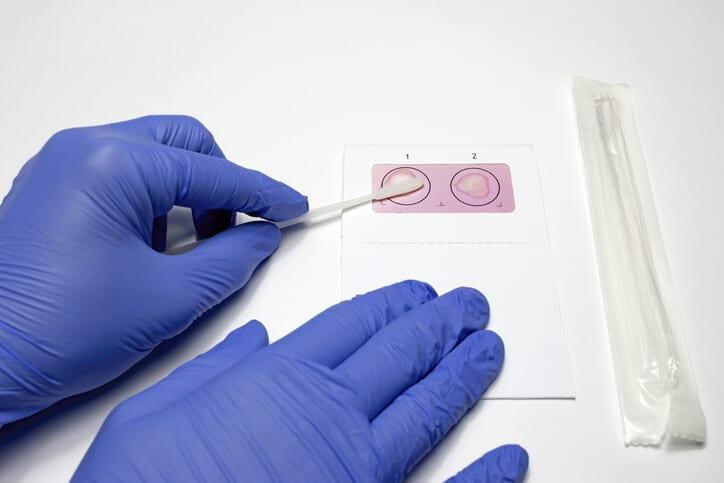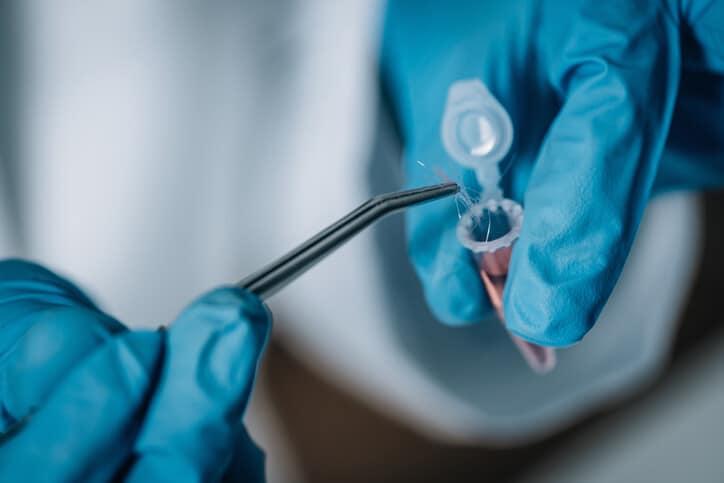- Free Consultation - Call 24/7: 248-515-6583 Tap Here to Call Us
What is a Rape Kit?
Statistics show that at least one person in America gets sexually assaulted every 96 seconds. If a person chooses to seek legal redress for the assault, the first step taken may be to inform the police. However, it may be difficult to get justice without tangible evidence.
Technological advancements have made it possible to collect biological evidence from a crime scene. Such evidence can be critical in proving the accused’s guilt or innocence.
With that said, DNA is not limited to the scene of a crime. For sexual crimes cases, DNA can also be collected from a complainant’s body, clothes, or other personal items through a forensic exam.
To the complainant, DNA can help nail the suspect, but if the DNA points to the suspect as the perpetrator, they may be in a lot of trouble. If the physical evidence points away from the suspect, it can help have their charges dismissed.
Having your DNA profile on the clothes or body of your accuser in itself doesn’t make you guilty. At the same time, it makes the chances of a conviction for alleged crimes significantly high.
If you are facing sex crime charges, you may have come across the term rape kit exam in your research and may be wondering what it is. Talking to a skilled sex crimes lawyer can help you understand everything you need to know about rape kit examinations and learn how to fight your sex crime charges.
What is a Rape Kit?
A rape kit also referred to as a sexual assault evidence kit (SAEK), is a box containing items used to collect forensic evidence from rape victims.
The kit was developed in the mid-1970s in Chicago to provide uniform evidence collection protocol for criminal sexual conduct cases.
Rape kits contain detailed instructions on how medical examiners (i.e. sexual assault nurse examiners) should collect and package the swabs taken of a person’s DNA (the exhibits) in a way that does not lead to a loss or contamination.

The contents of the kits can vary from one state to another, but there are some major similarities across all states.
Some of the basic items that should be in a SAEK include:
- Instruction from the medical examiner and the subject
- Bags and envelopes for collecting the samples
- Tools for taking blood samples
- DNA collection swabs
- A comb
- Sample documenting forms
- White sheets to collect loose hairs and fiber from the complainant’s clothes and body
- Labels
- Sterile water
Michigan SAEK Laws
Michigan’s SAEK statute was created in 1978. Under MCL 333.21527, if a person goes to a hospital and alleges they have been sexually assaulted and it’s less than 120 hours from the time of the assault, likely rape kits will be done. The attending healthcare personnel must inform them of the availability of sexual assault forensic exams.
If the complainant consents to the exam, the law requires the attending health care personnel to perform or have someone else perform a forensic examination, following the procedures prescribed in the SAEK. Additionally, the attending healthcare personnel must inform the individual provisions for payment for the procedures.
Who Runs the Exams?
Qualified medical professionals who perform SAEK exams are mostly nurses or physicians, but some medical facilities have specially trained sexual assault forensic examiners with direct experience working with rape survivors.
These specially trained professionals are:
- Sexual Assault Forensic Examiner (SAFE)
- Sexual Assault Nurse Examiner (SANE)
Research indicates that medical facilities with specially trained sexual assault examiners are significantly better at collecting samples, which results in higher prosecution rates for criminal sexual conduct offenders.

Additionally, the specially trained medical professional often has adequate training to conduct the exams in a dignified and sensitive manner, thus reducing trauma to the affected persons.
What the Exams Entail
The sexual assault forensic exam process is highly invasive and time-consuming, with some taking up to four hours.
Below are some of the steps that are involved in the exams.
- The physical exam starts with the subject standing over a large sheet of paper and undressing. The purpose of the paper sheets is to ensure that all of the evidence collected from the clothes or body as they undress is gathered safely and securely. Every piece of their clothing is carefully examined before being individually packaged to avoid the possibility of cross-contamination and to preserve evidence.
- After undressing, the examiner will carefully perform a full body examination for physical injuries, such as bruises and scrapes, while at the same time assessing their overall physical health. They may also perform imaging tests if need be. If any injuries are observed, the medical examiner will take detailed photos of the physical injuries. The examiner may also, at this point, take the person’s medical history to distinguish between injuries inflicted by the assailant and injuries inflicted during the attack. The examiner will also have a packet of paperwork to fill out. Within that packet, there will be an anatomical person where the examiner can draw any injuries, etc., for purposes of documentation.
- Once the physical injuries are documented, the examiner will do a detailed internal exam of the mouth, female and male genitalia, and reproductive organs. For females, the physical examination includes a pelvic exam. The examiner will then collect fluid samples from the mouth, anus, male and female genitalia, blood samples, swabs, and scrapings underneath the nails.
- All the clothes, collected samples, and documented exam records are sealed in the kit. These items will provide the most significant evidence should the complainant go to court.
- Once the examiner takes samples, they will give medication and treatment for the injuries, including medication to prevent sexually transmitted diseases and pregnancy resulting from their experience. The person will also be given contacts for people or organizations that can help them cope with their experiences or help with getting legal redress.
- After treatment, the individual may take a shower and put on different clothes, and then they will be free to leave if their injuries do not require admission. Police officers trained in handling sex cases may offer to talk to them; however, the person is not obligated to talk to an officer or make a police report. With that said, they may be given instructions on what to do should they decide to report it later.
Most people are afraid to have a rape kit performed out of fear that it will be painful. To many, the idea of the exam can feel like reliving the ordeal. However, taking the exam is important because it can help ensure justice is done.
Rape kit exams are not entirely pain-free. A person may experience discomfort as the examiner conducts the exam, but it should not be extremely painful.
If, while undergoing a sexual assault examination, you experience extreme pain, it’s important to let your examiner know, as this could indicate injuries that the examiner may be causing and/or need to look into.
Testing the Exhibits in a Crime Lab
Once the exams are complete, the kit is sealed and kept in the medical facility or transferred to a police facility and marked as anonymous until the complainant reports the case.
Upon reporting, the agency investigating the crime will send the kit as a whole or in parts to a forensic science lab for analysis.
Suppose the lab successfully gets a DNA profile from the samples tested. In that case, the officers investigating the crime will enter the DNA profile from the kit and potential rapist into the Combined DNA Index System (CODIS), which is the national FBI database that helps law enforcement track offenders.
If the DNA collected on a complainant matches another person’s DNA, their chances of getting a conviction can be extremely high, considering every individual has a unique DNA, except for identical twins.
With that said, your DNA sample being on an alleged victim’s body or clothes doesn’t necessarily mean you are guilty. Sometimes individuals can claim they were assaulted even after consensual sex to get back at their partners or ex-partners.
Getting off the hook under such circumstances, however, may not be simple. Therefore, it’s important to talk to an experienced attorney who focuses on sex crimes to help you beat your charges.
Sometimes it is possible for the samples collected to not yield any DNA results. This means that the assailant cannot be identified through their DNA, and the investigating agencies may need to rely on other things (i.e. exhibits) to prosecute a suspect.
Some of the reasons a test fails to yield a DNA profile include:
- The assailant didn’t leave any behind
- Too much time had passed between the time of contact with the assailant and the collection of the samples
- The samples were improperly collected, handled, or stored
Another main reason exams may not yield results is that it is common for the complainant to shower after the alleged rape because the experience can leave a person feeling dirty and used. Washing significantly reduces the chances of the assailant’s DNA remaining on the complainant.

Additionally, using the restroom and combing your hair are also known to destroy evidence. According to the police department, having an examination before taking a shower or changing your clothes is the best way of ensuring that the samples collected yield a DNA profile.
Reliability of DNA and its Influence on Cases
DNA is very reliable and can be a major factor in a conviction or dismissal.
According to experts, DNA can be up to 95% accurate. As a result, it has been used to solve various types of sex crimes, which include:
1. Stranger Sex Crimes Cases
Sometimes criminal sexual conduct offenses can be perpetrated by a person unknown to the complainant. In such cases, the kit can be very instrumental in identifying the offender.
A study published in the justice system journal in 2009 indicated that stranger sexual crimes cases that had forensic proof had 24 times the likelihood of producing an arrest than those without DNA.
Once the police get a DNA profile in a criminal sexual conduct case, they run it against its database. If a match is found, the suspected assailant is then arrested and charged with a crime.
At other times, the DNA profile obtained may not match any from the database. In that case, the DNA will be saved in the database as unknown until a match can be found.
2. Acquaintance Rape
The majority of sex crimes are committed by individuals known to one another. Identifying an offender may not be the problem in such a case, however proving their guilt can be a problem.
With DNA, proofing guilt can be pretty straightforward, but proving an acquittance rape based on DNA only may not be sufficient, especially if it involves adults because the offender can use consensual sex as a defense.
Under such circumstances, the investigating agency may need to back up their DNA profile exhibits with other pieces of physical proof in the kit, such as photographs of bruises and scrapes resulting from the ordeal.
3. Serial Rape Cases
A serial rapist can be defined as an assailant on a spree of sexual crimes or somebody that has raped multiple people.
Serial rape can be complex and problematic to the police, especially if a case doesn’t have any leads. DNA profiling can play an instrumental role in identifying the serial rapist in such a case. Even where a DNA profile doesn’t lead to an arrest, it can help the police identify serial rapist cases.
Rape Kit Backlogs
A recent HBO documentary titled “I Am Evidence” presented shocking statistics of a backlog of kits across major cities in America. As a result, many complainants of sex crimes have had to wait for years, even after undergoing forensic medical examination and releasing them to the police. To a sexual assault victim, this wait can feel like a letdown by the justice system mandated to uphold their rights.
Although there is a rape kit backlog, as long as the evidence is preserved, there is a chance of figuring out who the perpetrator is. This can be bad news for the perpetrators because it means that they may not be off the hook for crimes committed many years in the past.
To catch up on its backlog in 2009, Michigan prosecutors discovered 11,000 untested kits. Since this discovery, the state of Michigan has been working around the clock to clear the backlog and make sure that it doesn’t happen again.
When clearing the mess, the results revealed that more than 470 samples were linked to serial rapists and connections to other cases in 35 states across America.
Case Sample
In 2017, 24-year-old David was sentenced to 20 to 30 years in prison for sexually assaulting a 14-year-old back in 2013, in Calhoun County. The evidence pointed to his involvement in other sex crimes resulting in his sentencing as a repeat offender.
Cost of the Exam
According to Michigan law under MCL 18.355a, a complainant should not pay for the exam directly, but the service is not offered for free. A complainant’s insurance can be billed for the exams, which means that the insurer gets to know you are claiming to have been raped, information that not all complainants would like to share.
Those concerned about their privacy can choose not to have their insurer billed. Under such circumstances, SAFE Response will foot the bill.
Criminal Sexual Conduct Offenses that The Kit Can Help Solve
Under Michigan law, sex offenses are classified into three main categories.
- First-degree criminal sexual conduct (CSC 1)
- Second-degree criminal sexual conduct (CSC 2)
- Third-degree criminal sexual conduct (CSC 3)
- Fourth-degree criminal sexual conduct (CSC 4)
Of the four classes of criminal sexual conduct offenses, SAEK can be particularly instrumental in prosecuting first and third-degree criminal sexual conduct offenses. This is primarily because first and third-degree criminal sexual conduct involves penetration, which involves an exchange of bodily fluids. The most significant distinguishing factor between first-degree criminal sexual conduct and third-degree criminal sexual conduct is the age of the complainant.
Of the two, first-degree criminal sexual conduct is the more serious felony offense carrying penalties of up to life in prison. Although third-degree criminal sexual conduct is the lesser of the two offenses, it also attracts severe penalties of a mandatory minimum sentence of 25 years and a lifetime of electronic monitoring.
DNA can also be used in offenses that do not involve penetration. For example, if a complainant successfully resists penetration and, in the struggle, injures the offender and their blood, saliva, or any bodily fluid gets on the other person’s body or clothes, those samples can be collected, tested, and used as evidence for attempted criminal sexual misconduct, second-degree criminal sexual conduct, and/or fourth-degree criminal sexual conduct.
What Happens to Unreleased Kits?
Under Michigan law, unreleased kits should be kept for at least a year. This allows the complainant time to decide if they are willing to release the kit to law enforcement agencies for testing or not.
After one year, the health provider is at liberty to destroy the evidence. In most cases, those complainants claiming they were raped are contacted before the kit is destroyed.
Releasing or failing to release the kit is always the prerogative of the complainant. With that said, the police do not require a complainant’s consent to test the kit if the complainant is a minor.
How Sure can I be that the Results are Authentic?
In most circumstances, DNA never gets it wrong. Therefore, there is a high chance that the results are authentic and admissible as evidence for your alleged crimes.
However, if you suspect any form of foul play, you should immediately let a lawyer know about it. DNA can only be as good as the process of collecting, storing, and analyzing it. If you can prove in court, with the help of a lawyer, that the alleged possible DNA evidence was contaminated in any way, you may have grounds for having it dismissed as inadmissible by the court.
Why Do You Need a Lawyer?
If you are facing criminal sexual conduct charges, DNA will probably be used during your prosecution. Under such circumstances, the chances of a conviction can be very high if the collected samples test positive for your DNA.
This is why you need to contact a lawyer. A seasoned attorney can look at all of the details of your case and offer the best defense possible for your charges, resulting in your them getting dropped or reduced to a lesser charge.
Let Nicole Blank Becker, a Criminal Defense Attorney Who Handles Sex Crimes Only, Help You with Your Case Today
Sex crime charges can have a lasting impact on an individual, and the situation becomes even worse if convicted.
Besides the penalties outlined under the law, a convicted offender will have to deal with a damaged reputation and other consequences that follow it.
Therefore, it’s important to hire an attorney immediately. By hiring an attorney who has years of experience handling criminal sexual assault cases and knows how to minimize the damages, you put yourself in the best place for success.
As soon as you know that you are under criminal investigation or being charged with a criminal sexual conduct charge, to minimize your chances of a conviction, you need to call Nicole Blank Becker immediately!
Nicole Blank Becker of Blank Law, PC is your best bet in beating your sex crime charge, no matter if you live in Michigan or out of state.
Nicole is solely focused on sex crimes and has been practicing law for more than 20 years. This means that, unlike most attorneys who handle a wide range of cases, Nicole has deep insight into the special sex crime laws and how to navigate them in order to achieve the best outcome. After all, it’s what she does every day, all day.
That’s not all. Nicole has served in the prosecutor’s office as the chief of the Sexual Abuse Unit. Her experience as a prosecutor is a huge advantage over her peers because it helps her look at sex crime cases from both sides of the law. Irrespective of the charge you may face, Nicole can take it on and deliver the best possible outcome.
Don’t entrust your future and your reputation to just any “criminal defense attorney” who claims to have experience in sex crimes. Let Nicole Blank Becker help you with your case now. You can reach Nicole by calling Blank Law, PC today at (248) 515-6583 or filling out an online form to book your first free consultation.

















